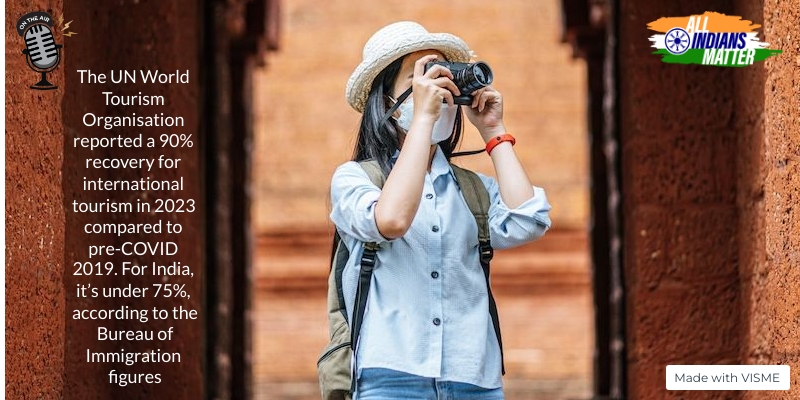Ashraf Engineer
June 3, 2023
EPISODE TRANSCRIPT
Hello and welcome to All Indians Matter. I am Ashraf Engineer.
Three adult cheetahs and three cubs relocated from Africa to Madhya Pradesh’s Kuno National Park have died over the past couple of months. The cubs died in close succession to each other in the past few weeks, with some experts blaming a heatwave. The cubs were the first to be born in India in more than 70 years; cheetahs were declared extinct in India in 1952 due to hunting and habitat loss. Their mother was among the 20 cheetahs flown in from Namibia and South Africa as part of Project Cheetah, an ambitious but controversial plan to reintroduce the big cats to India. The government plans to spend $11 million over five years to see whether the top predator population can be restored where they once thrived and up to 40 cheetahs may eventually be part of the programme. Now, the entire project is under a cloud after concerns have been raised about how suitable their habitat is. Given the massive setbacks, what lies ahead for the cheetahs and what can India do to ensure their survival and proliferation?
SIGNATURE TUNE
Veterinarians at Kuno were closely monitoring the cubs and their mother and they finally intervened when the mercury breached 47 degrees Celsius. The cubs were reported to be “weak, underweight and highly dehydrated” and they perished despite the intervention. This was emblematic of how the effort to reintroduce cheetahs has gone. Even the Supreme Court has expressed concerns over the deaths and asked the Union Government to consider shifting the cheetahs to alternative locations.
On May 15, in a column published in the ‘South African Journal of Science’, scientists from the country wondered whether it was “squandering” its cheetahs. South Africa had sent 12 of the big cats to India and now there are doubts whether it did the right thing. The scientists said India’s project is not based on the best available science and will not benefit cheetah conservation. They called for a “globally coordinated approach to cheetah conservation based on sound science” that prioritises in situ conservation for Asian and African cheetahs.
Namibia was the other country to have sent cheetahs to India, eight, to be precise. The cheetahs from both countries were introduced into Kuno in September 2022 and February 2023 with an aim to establish a free-ranging population of the sub-species Acinonyx jubatus.
The doubts raised by the South African scientists were echoed by three scientists from the Leibniz Institute for Zoo and Wildlife Research in Berlin. They pointed out serious shortcomings in India’s plan. For instance, the cheetahs were introduced in an unfenced area of 748 sq km, surrounded by villages with livestock farmers.
Going by prey density alone, the park’s carrying capacity for cheetahs is only 21 or three per 100 sq km. The German scientists, writing in the ‘Conservation Science and Practice’ journal, said that such “high cheetah densities have not been recorded for other free-ranging African cheetah populations roaming in unfenced areas”. In such areas, there is just one cheetah per 100 sq km of unfenced area. Even in areas rich with prey, such as the Maasai Mara in Kenya, the cheetah density is roughly the same.
Here’s how the socio-spatial science breaks down: adult males have two distinct spatial tactics, they’re either territory holders or floaters. And the territories are distributed with a separation distance of 20 km to 23 km. The large areas between the territories are not defended by any males, but instead used by females and floaters.
Of the eight cheetahs brought from Namibia, three are males and they will each establish a separate territory for themselves and each territory will be separated by 20 km to 23 km. The researchers predicted that, irrespective of the territory size, the three males from Namibia will occupy the entire national park. This would leave no space for additional territories for the males introduced from South Africa. As I said earlier, South Africa gave India 12 cheetahs, and seven of them are male.
What all this means is that the additional male cheetahs will be forced to settle outside the national park, roughly 20 km to 23 km away. This would bring them in direct conflict with human settlements and the livestock farmers.
The researchers warned: “If India further follows their plans of establishing a meta-population in their country by introducing cheetahs to several parks in India, we argue that the socio-spatial organisation of cheetahs needs to be considered. Our predictive approach has the potential of tackling pro-actively farmer-cheetah conflicts, enhancing our knowledge of cheetahs establishing territories in new areas and to assess the success of potential future trans-continental introductions.”
Other experts, too, have warned that Kuno, at 748 sq km, is not suitable for cheetahs. An effort like this would need thousands of square miles. Also, they may face risks from other predators or lack of adequate prey.
This is why it has for long been said that, while conservation is critical, the whole thing was approached as a publicity event instead. The first eight cheetahs were introduced into Kuno amidst a publicity blitzkrieg on Prime Minister Narendra Modi’s 72nd birthday. The criticism has gained new momentum now.
In a Supreme Court hearing recently, the judges wondered whether Kuno was a fit habitat for the cheetahs. The bench noted: “It appears that Kuno is not sufficient for so many cheetahs. There is too much concentration of cheetahs in one place.” Justices BR Gavai and Sanjay Karol added: “You are getting animals from abroad and there might be a complete extinction at one place. Why don’t you try for some alternate remedy?”
They suggested that the government consider moving some of the cheetahs to Rajasthan, warning that politics should not play a role. The justices said: “Merely because Rajasthan is ruled by an opposition party does not mean you will not consider it.”
Many wildlife experts feel that the Supreme Court’s warnings have come too late. Speaking to the media, Ravi Chellam, coordinator of Biodiversity Collaborative, called the programme “a vanity project”. He said it was at best the creation of “a glorified safari park” that had little to do with conservation and could, in fact, have a negative effect on the health of the cheetahs.
India has had many conservation successes, notably with lions in Gir.
With Project Cheetah, however, the experts are worried. It’s clear now that the investments in the project must be based on adequate consultation with experts from Namibia and South Africa who have actual experience in managing these cheetahs. Special attention must be paid to cultural traditions that minimise poaching and encourage local communities to be protective of the animals. Every death and birth says something about the implementation of the project and so they must act as markers for the course corrections needed.
Conservation is important in an age when species and forests are under severe threat. But treating it as a marketing effort will only result in wasted resources and failure.
Thank you all for listening. Please visit allindiansmatter.in for more columns and audio podcasts. You can follow me on Twitter at @AshrafEngineer and @AllIndiansCount. Search for the All Indians Matter page on Facebook. On Instagram, the handle is @AllIndiansMatter. Email me at editor@allindiansmatter.in. Catch you again soon.






